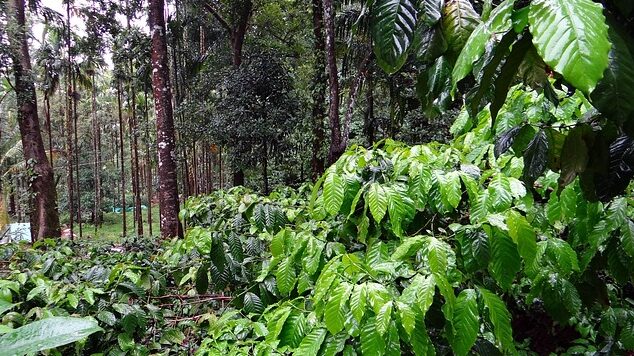
Specialty coffee production is a rewarding effort that requires careful planning, hard work, and therefore attention to detail. As a result, agroforestry has emerged as a popular and effective way to produce high-quality coffee, while promoting sustainability.
In this blog post, you will learn about the agroforestry production of specialty coffees, its benefits, and the necessary steps to make it happen.
What is Agroforestry?
Agroforestry is a land management system that combines the cultivation of trees with crops such as for instance, specialty coffee. Besides, agroforestry´s goal is to create a diverse and sustainable agricultural ecosystem. That is to say, this system benefits both the environment and the local community. In the context of specialty coffee production, agroforestry involves planting coffee trees alongside other crops, such as fruit trees.
What are the benefits of agroforestry specialty coffee?
- Environmental sustainability
- Agroforestry promotes biodiversity and soil health, reduces erosion, and conserves water resources. Also, it helps mitigate the effects of climate change.
- Higher quality coffee
- Coffee trees grown under shade produce higher quality beans, with more complex flavors and aromas than coffee grown in full sun.
- Economic benefits
- Agroforestry provides additional sources of income from other crops, as well as employment opportunities for local communities.
Now you understand what is agroforestry production, how it helps coffee production and its benefits. For this reason, it is time for you to learn how to do it step-by-step.
How to Produce Agroforestry Specialty Coffee: A Step-by-Step Guide
Step 1: Choose the right location
Select a location that is suitable for growing coffee and has the right soil and climate conditions. Usually, coffee trees thrive in well-drained soils with a pH range of 6.0 to 6.5. Besides, they also require temperatures between 15 and 20°C.
Step 2: Prepare the land
Clear the land of any existing vegetation, including grasses, shrubs, and trees, to make room for the coffee trees. This can be done using a variety of methods, including manual clearing, mechanical clearing, or chemical herbicides.
Step 3: Plant the coffee trees
Plant the coffee trees, spacing them according to their growth habits and expected size. Remember one of the most important benefits of agroforestry produce and plant shadow trees alongside coffee ones.
When planting coffee trees, dig a hole that is deep enough to accommodate the root ball. In addition, the hole needs to be wide enough to allow for good root growth.
After that, water the trees and add mulch around the base to retain moisture.
Step 4: Integrate other crops
When it comes to integrating other crops and trees into your agroforestry system it’s important to consider the local climate and soil conditions. It´s also important to consider the growth habits of coffee trees and other plants.
Therefore, in Brazil, some potential crops to integrate into your agroforestry system include fruit trees. For example, some of the most common are avocado, mango, and citrus, as well as legumes such as beans and peanuts. These crops are recommended because they can provide additional sources of nutrients for the coffee trees, and can also help to promote soil health and biodiversity.
Otherwise, in Colombia, some potential crops to integrate into your agroforestry system include plantains, bananas, and cacao. In the case of legumes, it´s recommended beans and peanuts.
Regarding spacing, it’s generally recommended to plant the shade trees at a distance of around 3 to 5 meters from the coffee trees. This allows enough space for the coffee trees to grow and receive adequate sunlight. Besides, it also provides shade and nutrients from the surrounding trees.
Step 5: Manage the agroforestry specialty coffee system
When it comes to managing your agroforestry system, it’s important to use organic and sustainable farming practices. By doing that, you promote soil health and biodiversity.
In Brazil and Colombia, this might include practices such as composting and crop rotation.
In the same way, in terms of managing shade trees and other crops, it’s important to monitor them regularly for signs of pests or disease and to take appropriate measures to control any issues that arise.
Step 6: Market and sell the specialty coffee
To market and sell specialty agroforestry coffee, it´s important to emphasize its unique flavor and aroma profile and its sustainable production methods. It´s equally important to establish partnerships with local roasters and specialty coffee shops to promote and sell the coffee. However, you don´t have to worry, this whole process is simplified by us at FARMly so that your specialty coffee and its history are included on the market in a fair and well-paid way.
In conclusion, producing agroforestry specialty coffee is a rewarding and sustainable way to produce high-quality coffee. Therefore, by following these six steps, you can create an agroforestry system that benefits both the environment and the local community and produces coffee that is unique, flavorful, and environmentally friendly.


